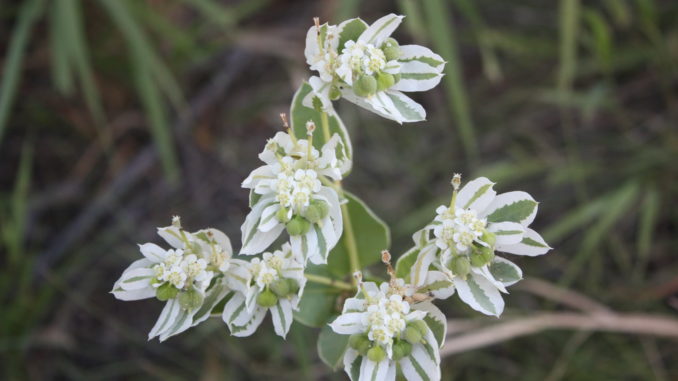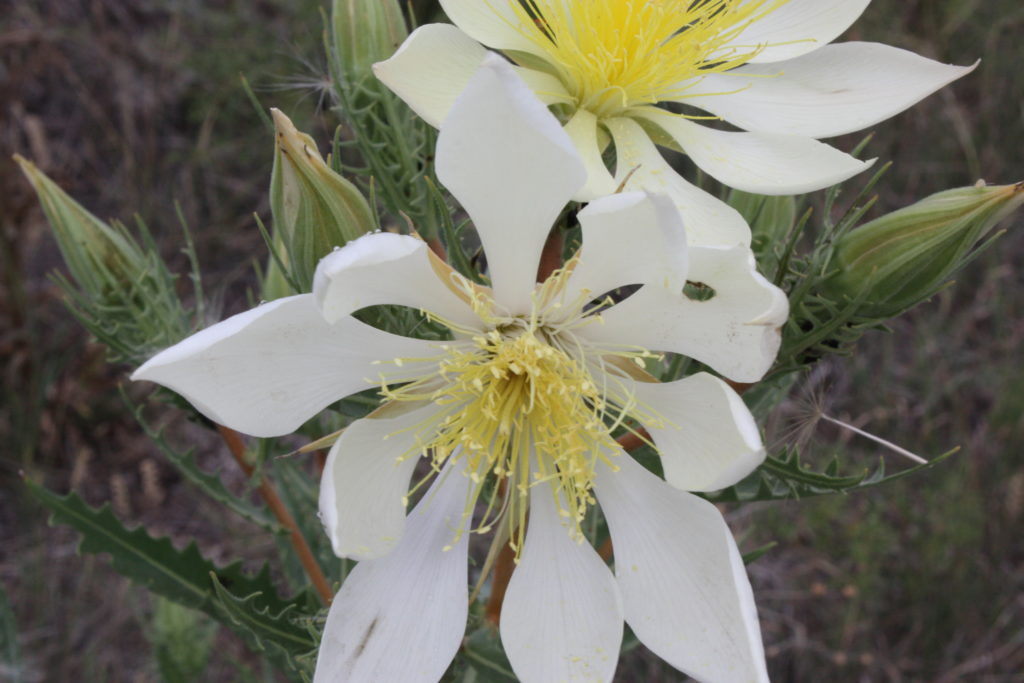
Hugh Mackay
The order in which our native and non-native wildflowers bloom is a bit like a calendar. Each species seems to have its scheduled bloom time every year. The anticipation of expecting certain flowers is fun and pretty reliable. Just as we look forward to our beautiful, white Easter Daisies (Townsendia hookeri) in early spring, we are now seeing flowers that we have been expecting in late summer. The species flowering order generally stays the same.
As we approach the end of August, three of these anticipated north forty flowers are in full bloom.

One familiar August plant is Spotted Blazing Star (Liatris punctata) a spike-like, pink/purple member of the Aster Family that can grow to a little over 30 inches tall. If you see one, you are likely to see many more nearby. The feathery look of the flower gives it another common name, Gayfeather. With a root that can be 15 feet deep, it is a fire and drought-resistant plant. Native Americans baked and ate the root. It is said to taste like carrots.

Another stunning late summer eastern slope flower, Ten Petal Blazing Star (Mentzelia decapitala, a member of the Stickleaf family, is a real slugabed. It doesn’t wake up and open its flowers until late morning or mid-afternoon and then stays up in bloom all night. It is easy to recognize with its large 10 petaled, white flowers, its 100 or so stamens, and its saw-tooth leaves. It can be as tall as you are and most of the plant feels like rough sandpaper.
A final favorite of mine at this time of year is Snow on the Mountain (Euphorbia marginata), a member of the Spurge family, One look at the plant and you can see why it gets its name. The leaves just beneath the flowers (bracts) are green with white edges. It is a showy plant and is often planted in gardens. However, be careful with it. IT IS POISON. Cattle and other browsers won’t eat it. It is also a skin irritant.
These three late summer plants can all be found in the Pineridge Natural Area, south of the old Hughes Stadium.
Support Northern Colorado Journalism
Show your support for North Forty News by helping us produce more content. It's a kind and simple gesture that will help us continue to bring more content to you.
BONUS - Donors get a link in their receipt to sign up for our once-per-week instant text messaging alert. Get your e-copy of North Forty News the moment it is released!
Click to Donate
